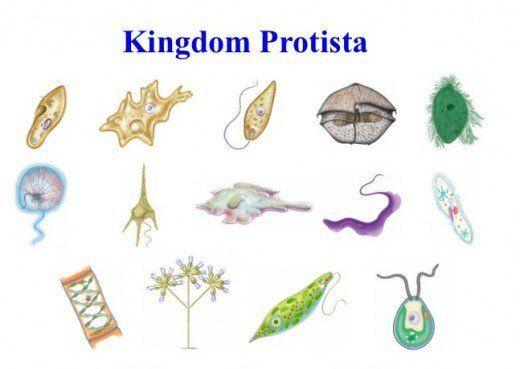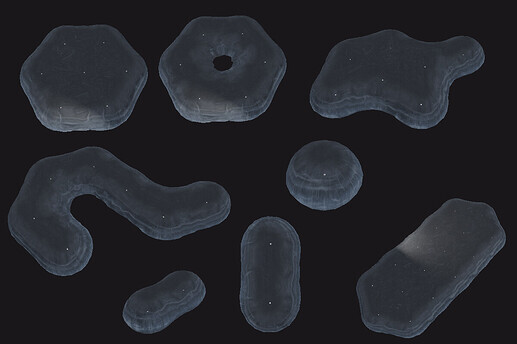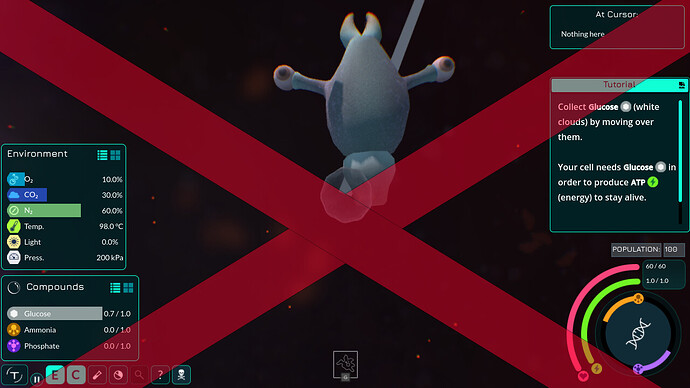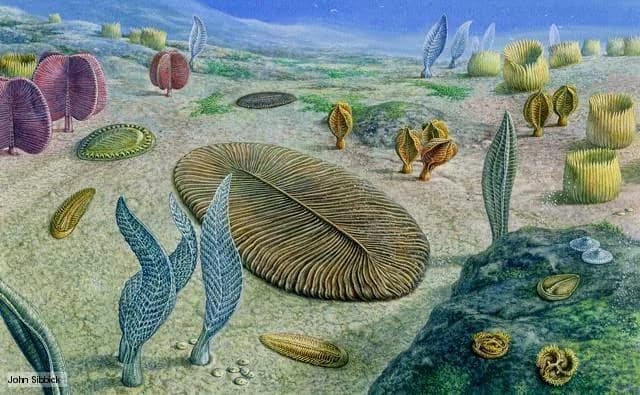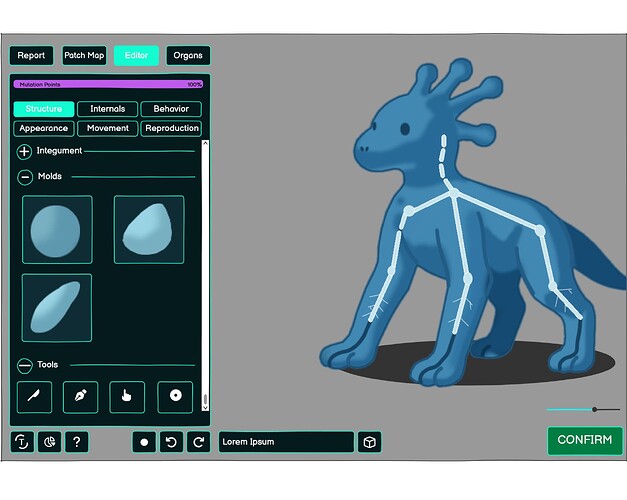Hello folks,
It has been quite some time since I last contributed to this project. Life and work have kept me incredibly busy and I haven’t had the opportunity to properly sit down and plan out any new features except fixing the ripple effect. However with version 1.0.0 approaching a significant milestone I feel it’s the right moment for me to metaphorically sit down and share some thoughts. I would like to talk a bit about the stages ahead and offer my vision not to impose it or discredit your ideas but to inspire and provide a starting point for you all think of it more like an advice from a friend than a directive. I’ll be touching on each stage sharing some broader ideas I hope can help guide future development also i would like to discuss with you any suggestions of implementing something that I might have so that maybe some of this stuff can already be put in the roadmap and start to be developed If I happen to mention features or ideas that have already been discussed or even implemented please understand that it’s not an oversight it’s simply because they resonate strongly with the direction I envision for the project. On a more personal note after what happened with Miura-san (Kentaro Miura) I genuinely believe that everyone involved in long-term creative projects should always have something in place to preserve and carry on their vision just in case. I have thought about this quite a bit and i came to the obvious conclusion that it would really suck if something ever happened to me and I hadn’t shared my full vision for Thrive especially since I have been so closely involved with the project being part of the board and all. I don’t want those thoughts, ideas or creative directions to go unspoken. This project is something I care deeply about and being part of its journey alongside all of you has meant a lot to me. So this is in part my way of ensuring that if the day ever comes when I can no longer contribute at least a piece of what I imagined lives on with the project.
Microbe Stage:
While it has become somewhat of a thing among us devs that we “hate” this stage with a passion… Jokes aside due to how long we’ve been working on it and despite the facts that it has been in development hell for so much time I understand the sentiment of wanting to put an end to it very soon since there’s a need to start with something fresh but imho it shouldn’t be something that is rushed. I would like to remind to you all that this is supposed to be the player’s first contact with Thrive and like any good introduction whether in a film, book or game it must be engaging. Remember that a weak foundation risks undermining everything that follows. Let’s not also forget that adapting such stage and it being the first one didn’t help either, microbe world seems easy to understand and may seem very one sided since they are unicellular beings and this is probably what tricked the previous team to start with this but instead microbes are very much complex, there is a whole lot on this world we didn’t cover yeah and probably never will since new things keep on getting discovered as the years pass by we can’t represent everything obviously, but i can proudly say that what we have implemented shows real dedication and a careful attention to details, and that’s something to be proud of. I would like to weigh in first and start off by mentioning this amazing post made by Deus to start my debacle and this post highlights some problems we are experiencing regarding replayability of the Microbe stage which is something we should be very careful about, here’s the post:
One of the key challenges I have also identified is that content without meaningful differentiation loses its impact. And I also think that that simply adding more patches or metabolisms doesn’t improve replayability unless these systems produce distinct gameplay loops. I also think that we should raise more concerns about how patch diversity feels mostly cosmetic at this stage. When adding “more” we should focus on systems that enhance emergent interactions and long-term consequences. The goal should be to make every choice matter more, not just offer more choices. One of the solutions I proposed in the past and I know I may seem like a broken record but I feel like proposing again is introducing shape mechanics which would directly support replayability and variety by enhancing how movement, engulfment, and environmental interaction work. Right now part only oriented gameplay often encourages optimal builds and while playing it it really felt to belong in a niche but we should also encourage creativity too. But by tying in organism form, players would be forced to think about trade-offs: ex: streamlining for speed vs maximizing surface area for engulfment or compound absorption. This system also should introduce constraints and specialization organically without locking players into archetypes too early. Here’s some pictures on how it looks like in the real world and what @dligr was able to implement while he made his amazing 3D membrane system.
I would also like to see more chaotic events that force players to adapt, triggering more migrations or evolutionary decisions. Light could and should play a stronger role too both in visuals and in gameplay mechanics, bringing back some of the ambience we had in earlier versions like 0.2.4 Finally I think that each stage including this one could benefit from the possibility of having a “bad ending” scenario. While this may not apply in LAWK mode, it could make for a richer gameplay enabling our players to explore unexpected outcomes. Imagine having a scenario like this come into play for example:
Another thing I would like to add is that we could balance engulfment similar to how it happens in this video:
A reference on how this stage could look is this concept art that I find very cool, it will probably look even better than this one but it already captures a great sense of atmosphere and biological depth our biggest goal should be to make the world feel alive and immersive not just functional. A place where you feel like you’re navigating a living microcosm.
One small thing I would like to mention is that I think it would be better to replace the current easter egg with something a bit more subtle and original. While it was fun as a nod to another well known evolution game from the past I believe it might be time to start distancing Thrive from direct comparisons especially given the fuss that occurred around October of last year and imho it also breaks immersion a lot and feels out of place.
Multicellular Stage:
The Multicellular Stage should represent a radical shift in how players perceive their organism not as a single entity anymore but as a growing biological factory this is in my opinion the only stage that should take a lot of inspiration from Factorio.
Each cell is a unit in a complex production chain. Players should focus on managing the internal logistics of their organism like transporting compounds and balancing the needs of growing tissues all while maintaining structural cohesion . Early on the gameplay should revolve around stabilizing this fragile cell aggregation finding ways for cells to work together more efficiently, sharing nutrients, signals, and defense before they begin forming specialized tissues. Over time what starts as an industrial network of cooperating cells should gradually transform into a more cohesive biological body In this sense your early choices become the blueprint for your first “creature” not something built like in another EA game that cannot be named anymore IG. The result has to be something that emerges from all you have done so far. It’s not about assembling parts but seeing your design evolve organically from your past adaptations. All the thing that you did in these first two stages should be the building blocks of what will come forward and the culmination of this is ending where we see the first creature hatching or being born from something that will swim away like this video, the blueprint for most complex life in the planet:
Obviously the creature should look more like a Cambrian/ Tonian era one:
I wasn’t entirely sure whether to place this thought under the Multicellular or Aware Stage, I’ll leave it here in the middle because it fits with the broader idea of early body planning but also has elements that I will mention later. I genuinely think we should start embracing more complex and unconventional organism designed things too like Etacystis or other bizarre real world lifeforms. This is the point in evolution where things could start getting weird and Thrive should encourage that. Let the player get freaky build asymmetric forms or fractal-like structures and radial monstrosities. Evolution in nature didn’t follow a clean path so why should we? Since I mentioned Etacystis I would also like to share this video so others can get a better idea of what it is. It’s an interesting watch too and could offer some great inspiration for the kind of complex unconventional designs we might want to support in the game.
I would also like to add that since convergent evolution ties so strongly into the way organisms adapt across different playthroughs, I think it deserves its own small spotlight. This should absolutely be reflected in Thrive’s gameplay not just for realism, but to enhance unpredictability and replayability. This would make evolution feel less deterministic and more creatively oriented. Here’s a great video that explores the concept in more depth:
Aware Stage:
In my opinion this stage shouldn’t just be centered about making the most intelligent species it should be one of the requisites for passing on the next stage but evolution doesn’t work that way the point should be first toevolve to fit the environment and find its niche then and only then obtaining sentience. Dinosaurs for instance weren’t the sharpest tools in the shed in regard to intelligence but they thrived. The aware stage should emphasize exploration, adaptation and survival especially in the underwater part of this stage. Core mechanics should include communication even underwater, predator evasion, and choosing between being solitary or gregarious which can lead to clan dynamics. As players transition to land this could unlock deeper mechanics hunting, social hierarchies, seasonal behavior, and more all tied to brain development and environmental pressures I would be very happy if the final result would be very close to the game “Ancestors: The Humankind Odyssey”. One major feature I envision is triggering mutations from the editor instead of having all the animals in the clan mutated suddenly like in the “famous” EA game I have mentioned before. I’d rather sack the traditional part-based system approach and the instant mutation. This in my opinion would make evolution feel more authentic and less artificial so that the mutated animal has to reproduce and spread its genes which would make evolving feel more earned too. The current implementation of the Aware Stage editor while functional can quickly become overwhelming and very difficult to navigate. To address this I propose a new approach, the editor should begin with a procedural skeleton structure. This would form the foundation of the organism’s physiology and animation logic.
The skeleton provides:
- Base proportions and body layout
- A structure to support procedural animation
- Anchors for muscle, skin, fur etc…
Players can adjust bone placement, limb count which should be dependent on previous evolutions similar to the real life concept demonstrated here:
The goal is to move away from a rigid parts based system. With the metaball system already in place players should freely sculpt their creatures adding shaping features. This approach lets players mold their creations rather than assembling them from fixed parts. I would be really happy if we got results similar to the topic here:
Here are some visual examples and detailed explaination on how my proposed editor could look in‑game and I’m introducing The Dissonance a copyright-safe creature designed to demonstrate the system in action.
Once the skeletal frame is defined, the internal organ system comes into play. Players can add or remove organs (ex: heart, lungs, guts) from an internal schematic view. This mode should allow to adjust skin width, fur/feathers, or better pigmentation patterns procedurally. These elements could also tie to gameplay for example a thicker skin could allow more protection but higher energy cost. This follows the design already shown in here:
Each organ has a blueprint that players can edit with a cell palette, tweaking internal composition based on which kind of tissue we need. This links beautifully to the cell-based stages and it gives a feeling of continuity we should foster.
This in my opinion offers far more immersion and biological believability rather than snapping prefab parts onto a base mesh.
Awakening Stage:
This stage seems to be progressing in a promising direction. The Minecraft inspired elements are a good base but I am against making crafting the sole focus. Instead I would like to see more emphasis on expanding the species, settling new territories, and developing early culture similar to what Homo Ergaster did. Evolution shouldn’t feel completely linear and finished either players should be able to interbreed with others of their lineage, leading to genetic diversity as I would like to have mutations still happen in this stage too which could lead to lots of gameplay possibilities.
Society Stage
Personally I don’t see a need to divide these stages from Society to Industrial or vice versa I think it should be just one macro stage as history shows us that even advanced civilizations have faced setbacks while not fully aligned with the mainstream view of history i’ll attach a video that offers a lot of fascinating insight into the reuse of structures that may have been left behind by older more advanced civilizations. It’s definitely a long watch but a very interesting one nonetheless.
I think this stage could be redefined instead of becoming a SimCity-like simulator it might be more fitting for us to take inspiration from something like Plague Inc. and mix it with a concept like Power & Revolution or Crusader Kings 3. My idea for a stage like this is starting from individual influence and gradually expanding your reach. You could sway public opinion. run for office. establish political systems.or even push toward authoritarian control. This way the stage evolves with the player’s growing influence over many generations this path could eventually lead to the creation of a space program like it happened in the 60s with us humans and much later the pursuit of a utopian society progressing toward achieving Type I on the Kardashev scale. From there it would naturally transition into the Space Stage. Somewhere along the way it would be hilarious and deeply fitting if civilizations began unearthing fossils of past creatures that appeared in previous stages attempting to reconstruct them with varying levels of success. Just like in real life some reconstructions could be wildly inaccurate think creatures with tails in the wrong place or bipedal fish offering both humor and reflection on how knowledge of the past is always shaped by present assumptions this video makes a fair point regarding this topic:
Space Stage
The Space Stage to me should be a synthesis of the best aspects from games like Starfield, Starbound and Stellaris we should also go the extra mile to make a sandbox of endless potential a true payoff of everything the player has done up to that point. I believe we have the potential to do what No Man’s Sky initially couldn’t which should be the goal to create a universe that feels alive. A thing i would keep from the Unknown EA game concept would be a mission-based system that offers narrative threads and challenges tied to your species’ lore. It should also be the perfect stage to lay down deeper lore for Thrive’s universe while also advancing towards other levels of the Kardashev scale. Regarding other races and spacefaring civilizations, I personally wouldn’t want to go the Unknown game route where you encounter endless randomly generated species that quickly blur together which in my opinion really breaks the immersion a lot. Instead, we could use semi-persistent civilization templates that adapt over time.Unlike the other stages I won’t go too deep into this one not because I lack ideas as I would like to make another topic when the moment comes. Mostly because it is emotional for me to think about. Reaching this point would mean Thrive’s development is nearing completion. And while I truly hope that day comes soon, I also want to say that working alongside all of you has been one of the most rewarding collaborative experiences I’ve ever had. I hope we do reach that moment but I also hope we take the time to enjoy the process and each other a bit longer before we get there.
